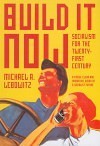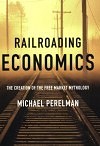Political Economy
A Critical Look at the Mexican Experience
Representatives of the established order were unprepared for the mas- sive 1999 demonstrations in Seattle against the World Trade Organziation (WTO) and remain on the defensive in the face of the inter- nationally coordinated actions against neoliberal globalization that have followed. On an ideological level, they have responded by seeking to undermine the legitimacy of antiglobalization activists, especially those in the developed capitalist world, by claiming that these activists oppose the very policies and institutions that are in the best interest of the poor in the third world. One example: the former head of the WTO, Mike Moore, declared that “The people that stand outside and say they work in the interests of the poorest people …they make me want to vomit. Because the poorest people on our planet, they are ones that need us the most.” | more…
John Saul has had an extensive and committed involvement with Southern Africa. His analyses are taken seriously in left circles in South Africa. Sadly, perhaps understandably, his most recent extended visit to this country has left him feeling deeply disappointed (“Cry for the Beloved Country: The Post-Apartheid Denouement,” Monthly Review 52, no. 8, January 2001, pp. 1–51). This sense of disappointment is rooted, I would guess, partly in the intellectual, organizational and even emotional energies that Saul, like many others, invested in the solidarity struggle against apartheid, and in legitimate expectations for a post-apartheid South Africa. There is also, and I want to underline my own empathy with his irritation on this score, a hint of personal hurt: “The most startling thing I personally discovered about the New South Africa is just how easy it has become to find oneself considered an ultraleftist!” (p. 1) This sense of disappointment, even of betrayal, is also present in many progressive circles within South Africa, and indeed among many cadres of our movement. Despite all of this there is, I believe, something seriously off-beam in Saul’s analysis | more…
It is interesting that, on one of the two main fronts of inquiry opened up in my original essay, Jeremy Cronin professes—despite the wounded tone he adopts throughout and for all his talk about my “frozen penultimates,” “sneers,” and “derision”—to be in considerable agreement with me. This concerns my reading of the overall trajectory of socioeconomic policy that the African National Congress (ANC) government has adopted since 1994. As he puts the point, “Saul goes on to argue that the ANC liberation front has erred seriously on two critical fronts—the choice of economic policies, and the relative demobilization of our mass constituency (except during electoral campaigns). I agree with Saul on both counts.” Indeed, he adds, “I agree substantially with the broad analysis of the last twelve years or so in South Africa that Saul makes in his pessimism of the intellect mode,” including, it would appear, my criticisms of the “government’s macroeconomic policy (the Growth Employment and Redistribution framework—GEAR), privatization policies, excessive liberalization measures, the failure to mobilize our mass base, or concerns about the growing bureaucratization and the influence of an emerging black bourgeois stratum on policy” | more…
The concept of “imperialism” was considered outside the acceptable range of political discourse within the ruling circles of the capitalist world for most of the twentieth century. Reference to “imperialism” during the Vietnam War, no matter how realistic, was almost always a sign that the writer was on the left side of the political spectrum. In a 1971 foreword to the U.S. edition of Pierre Jalée’s Imperialism in the Seventies Harry Magdoff noted, “As a rule, polite academic scholars prefer not to use the term ‘imperialism.’ They find it distasteful and unscientific.” | more…

Since the end of the Cold War, the idea of human rights has been made into a justification for intervention by the world’s leading economic and military powers—above all, the United States—in countries that are vulnerable to their attacks. The criteria for such intervention have become more arbitrary and self-serving, and their form more destructive, from Yugoslavia to Afghanistan to Iraq. Until the U.S. invasion of Iraq, the large parts of the left was often complicit in this ideology of intervention-discovering new “Hitlers” as the need arose, and denouncing antiwar arguments as appeasement on the model of Munich in 1938. | more…
Lessons from Planning in the U.S.S.R. & the U.S.
In early July 2002, I asked Harry Magdoff if he would be interviewed for the Statesman, a Kolkata, India newspaper for which I write political commentary. Our first interview was so satisfying that we continued for several sessions. What follows is a discussion of something Harry has considered, what we can learn from the experience of the Soviet Union. It is, characteristically, concerned with learning from history. Harry is methodologically committed to the actual world from which all theory springs, to which it must speak, and to meet whose specific particularities it must continually be reshaped. | more…
The growth and eventual bursting of financial bubbles is an inherent feature of capitalist accumulation, as can be seen in the long history of such crises from the South Sea Bubble of the early eighteenth century to the financial blowouts of the present day. In the first half of the summer a dramatic bubble-bursting decline in the U.S. and European stock exchanges wiped out the stock market gains of the previous five years—a period characterized by manic speculation | more…

Build It Now puts forward a clear and innovative vision of a socialist future, and at the same time shows how concrete steps can be taken to make that vision a reality. It shows how the understanding of capitalism can itself become a political act’a defense of the real needs of human beings against the ongoing advance of capitalist profit. | more…
Rethinking the Image and Role of the "Okies"
While at work on this paper, I glanced at the headline in the morning newspaper: “SWAT Team Kills Gunman at Sacramento Tax Office,” and I said to myself, “Probably an Okie.” I read the article and found no reference to Okies—that would never happen in California these days—but the evidence was there: A white man named Jim Ray Holloway, age fifty-three, from Manteca, wearing a cowboy hat, carrying a rifle, a shotgun, and a hand gun, ex-cop, mad about taxes. The name, the age, the hometown in the agricultural Central Valley, the cowboy hat, the kinds of weapons, the career, the lightening rage at the state, all point to his being an Okie | more…
The reappearance of the mural marks the return of painting from the museum to its public role in the human community. The work of muralist Mike Alewitz and the collective character of his projects draw upon centuries or eons of collaborative activity, from cave paintings to Michelangelo, the Dada and Surrealist movements to political graffiti. Alewitz’s approach is ideally suited to the postmodern and post-state socialist era when everything rebellious must be created anew and when “culture” along with “labor” is urgently needed to salvage a world from eco-disaster, perpetual war, and the plundering of human possibility. The art of Alewitz and Co. (with the Co. constantly changing) has already been part of labor’s recovery from decades of poor leadership, part of the struggle for democratic unions in a changing global marketplace and with a rapidly changing workforce | more…

Most economic theory assumes a pure capitalism of perfect competition. This book is a penetrating critique of the rhetoric and practice of conventional economic theory. It explores how even in the United States—the most capitalist of countries—the market has always been subject to numerous constraints. | more…

Only once we understand the long history of human efforts to draw sustenance from the land can we grasp the nature of the crisis that faces humankind today, as hundreds of millions of people are faced with famine or flight from the land. From Neolithic times through the earliest civilizations of the ancient near East, in savannahs, river valleys and the terraces created by the Incas in the Andean mountains, an increasing range of agricultural techniques have developed in response to very different conditions. These developments are recounted in this book, with detailed attention to the ways in which plants, animals, soil, climate, and society have interacted. | more…



